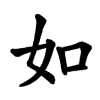Definify.com
Definition 2025
中
中
| ||||||
|---|---|---|---|---|---|---|
Translingual
| Stroke order | |||
|---|---|---|---|

| |||
Han character
中 (radical 2 丨+3, 4 strokes, cangjie input 中 (L), four-corner 50006, composition ⿻口丨)
Derived characters
- 𤆪
References
- KangXi: page 79, character 3
- Dai Kanwa Jiten: character 73
- Dae Jaweon: page 158, character 6
- Hanyu Da Zidian: volume 1, page 28, character 10
- Unihan data for U+4E2D
Chinese
|
simp. and trad. |
中 | |
|---|---|---|
| alt. forms |
𠁦 𠁧 𠁩 𠔈 𠔗 |
|
Glyph origin
| Historical forms of the character 中
| ||||||||||||||||||||||||||||||||||||||||||||||||||||||||||||||||||||||||||||||||||||||||||||||||||||||||||||||||||||||||||||||||||||||||||||||
|---|---|---|---|---|---|---|---|---|---|---|---|---|---|---|---|---|---|---|---|---|---|---|---|---|---|---|---|---|---|---|---|---|---|---|---|---|---|---|---|---|---|---|---|---|---|---|---|---|---|---|---|---|---|---|---|---|---|---|---|---|---|---|---|---|---|---|---|---|---|---|---|---|---|---|---|---|---|---|---|---|---|---|---|---|---|---|---|---|---|---|---|---|---|---|---|---|---|---|---|---|---|---|---|---|---|---|---|---|---|---|---|---|---|---|---|---|---|---|---|---|---|---|---|---|---|---|---|---|---|---|---|---|---|---|---|---|---|---|---|---|---|---|
| Oracle bone script | Bronze inscriptions | Bamboo and silk script | Large seal script | Small seal script | ||||||||||||||||||||||||||||||||||||||||||||||||||||||||||||||||||||||||||||||||||||||||||||||||||||||||||||||||||||||||||||||||||||||||||
 |
 |
 |
 |
 |
||||||||||||||||||||||||||||||||||||||||||||||||||||||||||||||||||||||||||||||||||||||||||||||||||||||||||||||||||||||||||||||||||||||||||
| ||||||||||||||||||||||||||||||||||||||||||||||||||||||||||||||||||||||||||||||||||||||||||||||||||||||||||||||||||||||||||||||||||||||||||||||
|
References:
Mostly from Richard Sears' Chinese Etymology site (authorisation),
| ||||||||||||||||||||||||||||||||||||||||||||||||||||||||||||||||||||||||||||||||||||||||||||||||||||||||||||||||||||||||||||||||||||||||||||||
| Characters in the same phonetic series (中) (Zhengzhang, 2003) | |
|---|---|
| Old Chinese | |
| 中 | *tuŋ, *tuŋs |
| 忠 | *tuŋ |
| 衷 | *tuŋ, *tuŋs |
| 忡 | *tʰuŋ |
| 浺 | *tʰuŋ |
| 盅 | *tʰuŋ, *duŋ, *tjoŋ |
| 种 | *duŋ |
| 沖 | *duŋ |
| 翀 | *duŋ |
| 仲 | *duŋs |
Pictogram (象形) – a vertical stroke 丨 passing throught the center of 口, indicating the center. Originally a pictograph of a string heddle: 綜 (OC *ʔsuːŋs). It is also interpreted as a flagpole piercing the middle of a frame or an arrow in the center of a target.
Etymology
From Proto-Sino-Tibetan *t/duŋ. Cognate with Tibetan གཞུང (gzhung, “middle, center”).
Pronunciation 1
- Mandarin
- Cantonese (Jyutping): zung1
- Hakka (Sixian, PFS): chûng / tûng
- Min Dong (BUC): dṳ̆ng / dŏng
- Min Nan (POJ): tiong
- Wu (Wiktionary): tson (T1)
- Mandarin
- (Standard Chinese, Beijing)+
- Pinyin:
- Zhuyin: ㄓㄨㄥ
- Wade-Giles: chung1
- Gwoyeu Romatzyh: jong
- IPA (key): /ʈ͡ʂʊŋ⁵⁵/
-

- (Standard Chinese, Beijing)+
- Cantonese
- (Standard Cantonese, Guangzhou)+
- Jyutping: zung1
- Yale: jūng
- Cantonese Pinyin: dzung1
- IPA (key): /t͡sʊŋ⁵⁵/
- (Standard Cantonese, Guangzhou)+
- Hakka
- (Sixian, incl. Miaoli and Meinong)
- Pha̍k-fa-sṳ: chûng / tûng
- Hakka Romanization System: zung´ / dung´
- Hagfa Pinyim: zung1 / dung1
- IPA: /t͡suŋ²⁴/, /tuŋ²⁴/
- Note: chûng - literary; tûng - vernacular.
- (Sixian, incl. Miaoli and Meinong)
- Min Dong
- (Fuzhou)
- Bàng-uâ-cê: dṳ̆ng / dŏng
- IPA (key): /tyŋ⁵⁵/, /touŋ⁵⁵/
- Note: dṳ̆ng - literary; dŏng - vernacular.
- (Fuzhou)
- Min Nan
- (Hokkien)
- Pe̍h-ōe-jī: tiong
- Tâi-lô: tiong
- Phofsit Daibuun: diofng
- IPA (Xiamen): /tiɔŋ⁴⁴/
- IPA (Quanzhou): /tiɔŋ³³/
- IPA (Zhangzhou): /tiɔŋ⁴⁴/
- IPA (Taipei): /tiɔŋ⁴⁴/
- IPA (Kaohsiung): /tiɔŋ⁴⁴/
- (Hokkien)
- Wu
- (Shanghainese)
- Wiktionary: tson (T1)
- IPA (key): /t͡sʊŋ⁵³/
- (Shanghainese)
- Dialectal data▼
| Variety | Location | 中 |
|---|---|---|
| Mandarin | Beijing | /ʈ͡ʂuŋ⁵⁵/ |
| Harbin | /ʈ͡ʂuŋ⁴⁴/ | |
| Tianjin | /t͡suŋ²¹/ | |
| Jinan | /ʈ͡ʂuŋ²¹³/ | |
| Qingdao | /ʈ͡ʂəŋ²¹³/ | |
| Zhengzhou | /ʈ͡ʂuŋ²⁴/ | |
| Xi'an | /p͡fəŋ²¹/ | |
| Xining | /ʈ͡ʂuə̃⁴⁴/ | |
| Yinchuan | /ʈ͡ʂuŋ⁴⁴/ | |
| Lanzhou | /p͡fə̃n³¹/ | |
| Ürümqi | /ʈ͡ʂuŋ⁴⁴/ | |
| Wuhan | /t͡soŋ⁵⁵/ | |
| Chengdu | /t͡soŋ⁵⁵/ | |
| Guiyang | /t͡soŋ⁵⁵/ | |
| Kunming | /ʈ͡ʂoŋ⁴⁴/ | |
| Nanjing | /ʈ͡ʂoŋ³¹/ | |
| Hefei | /ʈ͡ʂəŋ²¹/ | |
| Jin | Taiyuan | /t͡suəŋ¹¹/ |
| Pingyao | /t͡suŋ¹³/ | |
| Hohhot | /t͡sũŋ³¹/ | |
| Wu | Shanghai | /t͡soŋ⁵³/ |
| Suzhou | /t͡soŋ⁵⁵/ | |
| Hangzhou | /t͡soŋ³³/ | |
| Wenzhou | /t͡ɕoŋ³³/ | |
| Hui | Shexian | /t͡sʌ̃³¹/ |
| Tunxi | /t͡san¹¹/ | |
| Xiang | Changsha | /ʈ͡ʂoŋ³³/ |
| Xiangtan | /ʈ͡ʂən³³/ | |
| Gan | Nanchang | /t͡suŋ⁴²/ |
| Hakka | Meixian |
/tuŋ⁴⁴/ ~心 /t͡suŋ⁴⁴/ ~間 |
| Taoyuan | /tuŋ²⁴/ | |
| Cantonese | Guangzhou | /t͡soŋ⁵³/ |
| Nanning | /t͡suŋ⁵⁵/ | |
| Hong Kong | /t͡suŋ⁵⁵/ | |
| Min | Xiamen (Min Nan) | /tiɔŋ⁵⁵/ |
| Fuzhou (Min Dong) | /tyŋ⁴⁴/ | |
| Jian'ou (Min Bei) |
/tœyŋ⁵⁴/ /tœyŋ³³/ ~奬 |
|
| Shantou (Min Nan) |
/toŋ³³/ /taŋ³³/ |
|
| Haikou (Min Nan) | /toŋ²³/ |
| Rime | |
|---|---|
| Character | 中 |
| Reading # | 1/2 |
| Initial (聲) | 知 (9) |
| Final (韻) | 東 (2) |
| Tone (調) | Level (Ø) |
| Openness (開合) | Open |
| Division (等) | III |
| Fanqie | 陟弓切 |
| Reconstructions | |
| Zhengzhang Shangfang |
/ʈɨuŋ/ |
| Pan Wuyun |
/ʈiuŋ/ |
| Shao Rongfen |
/ȶiuŋ/ |
| Edwin Pulleyblank |
/ʈuwŋ/ |
| Li Rong |
/ȶiuŋ/ |
| Wang Li |
/ȶĭuŋ/ |
| Bernard Karlgren |
/ȶi̯uŋ/ |
| Expected Mandarin Reflex |
zhōng |
| Baxter-Sagart system 1.1 (2014) | |
|---|---|
| Character | 中 |
| Reading # | 1/2 |
| Modern Beijing (Pinyin) |
zhōng |
| Middle Chinese |
‹ trjuwng › |
| Old Chinese |
/*truŋ/ |
| English | center |
Notes for Old Chinese notations in the Baxter-Sagart system: * Parentheses "()" indicate uncertain presence; | |
| Zhengzhang system (2003) | |
|---|---|
| Character | 中 |
| Reading # | 1/2 |
| No. | 17407 |
| Phonetic component |
中 |
| Rime group |
終 |
| Rime subdivision |
0 |
| Corresponding MC rime |
中 |
| Old Chinese |
/*tuŋ/ |
Definitions
中
- middle; center
- medium; intermediary
- within; among; in
- while; in the process of; during; in the middle of
- (dialectal) all right; OK
- Short for 中國/中国 (Zhōngguó, “China; Chinese”).
- Short for 中學/中学 (zhōngxué, “middle school”). Used only in the abbreviation of the name.
- 三中 ― Sān Zhōng ― No.3 Middle School
- A surname. Zhong
Compounds
|
|
|
Pronunciation 2
- Mandarin
- Cantonese (Jyutping): zung3
- Hakka (Sixian, PFS): chung
- Min Dong (BUC): dé̤ṳng
- Min Nan (POJ): tiòng / tèng
- Wu (Wiktionary): tson (T2)
- Mandarin
- (Standard Chinese, Beijing)+
- Pinyin:
- Zhuyin: ㄓㄨㄥˋ
- Wade-Giles: chung4
- Gwoyeu Romatzyh: jonq
- IPA (key): /ʈ͡ʂʊŋ⁵¹/
- (Standard Chinese, Beijing)+
- Cantonese
- (Standard Cantonese, Guangzhou)+
- Jyutping: zung3
- Yale: jung
- Cantonese Pinyin: dzung3
- IPA (key): /t͡sʊŋ³³/
- (Standard Cantonese, Guangzhou)+
- Hakka
- (Sixian, incl. Miaoli and Meinong)
- Pha̍k-fa-sṳ: chung
- Hakka Romanization System: zung
- Hagfa Pinyim: zung4
- IPA: /t͡suŋ⁵⁵/
- (Sixian, incl. Miaoli and Meinong)
- Min Dong
- (Fuzhou)
- Bàng-uâ-cê: dé̤ṳng
- IPA (key): /tøyŋ²¹³/
- (Fuzhou)
- Min Nan
- (Hokkien)
- Pe̍h-ōe-jī: tiòng / tèng
- Tâi-lô: tiòng / tìng
- Phofsit Daibuun: dioxng, dexng
- IPA (Xiamen): /tiɔŋ²¹/, /tiɪŋ²¹/
- IPA (Quanzhou): /tiɔŋ⁴¹/, /tiɪŋ⁴¹/
- IPA (Zhangzhou): /tiɔŋ²¹/, /tiɪŋ²¹/
- IPA (Taipei): /tiɔŋ¹¹/, /tiɪŋ¹¹/
- IPA (Kaohsiung): /tiɔŋ²¹/, /tiɪŋ²¹/
- (Hokkien)
- Wu
- (Shanghainese)
- Wiktionary: tson (T2)
- IPA (key): /t͡sʊŋ³⁴/
- (Shanghainese)
| Rime | |
|---|---|
| Character | 中 |
| Reading # | 2/2 |
| Initial (聲) | 知 (9) |
| Final (韻) | 東 (2) |
| Tone (調) | Departing (H) |
| Openness (開合) | Open |
| Division (等) | III |
| Fanqie | 陟仲切 |
| Reconstructions | |
| Zhengzhang Shangfang |
/ʈɨuŋH/ |
| Pan Wuyun |
/ʈiuŋH/ |
| Shao Rongfen |
/ȶiuŋH/ |
| Edwin Pulleyblank |
/ʈuwŋH/ |
| Li Rong |
/ȶiuŋH/ |
| Wang Li |
/ȶĭuŋH/ |
| Bernard Karlgren |
/ȶi̯uŋH/ |
| Expected Mandarin Reflex |
zhòng |
| Baxter-Sagart system 1.1 (2014) | |
|---|---|
| Character | 中 |
| Reading # | 2/2 |
| Modern Beijing (Pinyin) |
zhòng |
| Middle Chinese |
‹ trjuwngH › |
| Old Chinese |
/*truŋ-s/ |
| English | hit the center |
Notes for Old Chinese notations in the Baxter-Sagart system: * Parentheses "()" indicate uncertain presence; | |
| Zhengzhang system (2003) | |
|---|---|
| Character | 中 |
| Reading # | 2/2 |
| No. | 17410 |
| Phonetic component |
中 |
| Rime group |
終 |
| Rime subdivision |
0 |
| Corresponding MC rime |
中 |
| Old Chinese |
/*tuŋs/ |
Definitions
中
- to hit the mark; to be correct; to be successful
- to be hit by; to suffer; to be affected by
-
- 一次伏擊中一名警察中彈身亡。 [MSC, trad.]
- 一次伏击中一名警察中弹身亡。 [MSC, simp.]
- Yīcì fújī zhōng yī míng jǐngchá zhòngdàn shēnwáng. [Pinyin]
- A policeman has been shot dead in an ambush.
-
- 他試圖爬走時肩膀中槍了。 [MSC, trad.]
- 他试图爬走时肩膀中枪了。 [MSC, simp.]
- Tā shìtú pá zǒu shí jiānbǎng zhòngqiāng le. [Pinyin]
- As he tried to crawl away, he was hit in the shoulder.
-
- to win (a prize, a lottery)
Compounds
Japanese
Kanji
Readings
Compounds
|
Common
|
Common (continued)
|
Common (continued)
Uncommon |
Etymology 1
| Kanji in this term |
|---|
| 中 |
|
なか Grade: 1 |
| kun'yomi |
Pronunciation
Noun
Derived terms
- 中今 (nakaima, “the present, as a privileged moment in eternity”)
Proper noun
中 (hiragana なか, romaji Naka)
- A surname.
Etymology 2
| Kanji in this term |
|---|
| 中 |
|
なか Grade: 1 |
| on'yomi |
Pronunciation
Noun
- middle, medium
- 大中小
- large, medium and small
- 大中小
- average; neither good nor poor
- 中の出来映え
- an average performance
- 中の出来映え
- during; being in the process of doing
- second volume of a three volume set
Etymology 3
| Kanji in this term |
|---|
| 中 |
|
うち Grade: 1 |
| kun'yomi |
Pronunciation
Noun
- 内 is the most common kanji for this pronunciation.
Proper noun
中 (hiragana ちゅう, romaji Chū)
中 (hiragana あたり, romaji Atari)
- A surname.
中 (hiragana あたる, romaji Ataru)
- A female given name
Suffix
- during, in the course of, throughout
- 世界中
- sekaijū
- throughout the world
- 体中
- karadajū
- throughout the body
- 世界中
- all over, everywhere
中 (hiragana ちゅう, romaji -chū)
- being in the process of doing
- ダウンロード中
- daunrōdo-chū
- downloading; download in progress
- メンテ中
- mente-chū
- currently in maintenance
- ダウンロード中
The distinction between じゅう (jū) and ちゅう (chū) can be somewhat confusing: じゅう (jū) means throughout, in all places, as in 一日中 (ichinichijū, “all day long”) or 体中 (karadajū, “throughout the body”), while ちゅう (chū) means within, but not everywhere, as in 授業中 (jugyōchū, “in class, during class”). Contrast “I worked on this all day long” with “I worked on this in class (but not necessarily for the entire time)”.
References
- 1 2 3 2006, 大辞林 (Daijirin), Third Edition (in Japanese), Tōkyō: Sanseidō, ISBN 4-385-13905-9
- 1 2 3 1998, NHK日本語発音アクセント辞典 (NHK Japanese Pronunciation Accent Dictionary) (in Japanese), Tōkyō: NHK, ISBN 978-4-14-011112-3
Korean
Hanja
中 • (jung)
Eumhun:
- Sound (hangeul): 중 (McCune-Reischauer: chung, Yale: cwung)
- Name (hangeul): 가운데 (revised: gaunde, McCune-Reischauer: kaunde, Yale: kawuntey)
Compounds
Noun
中 • (jung) (hangeul 중)















































































